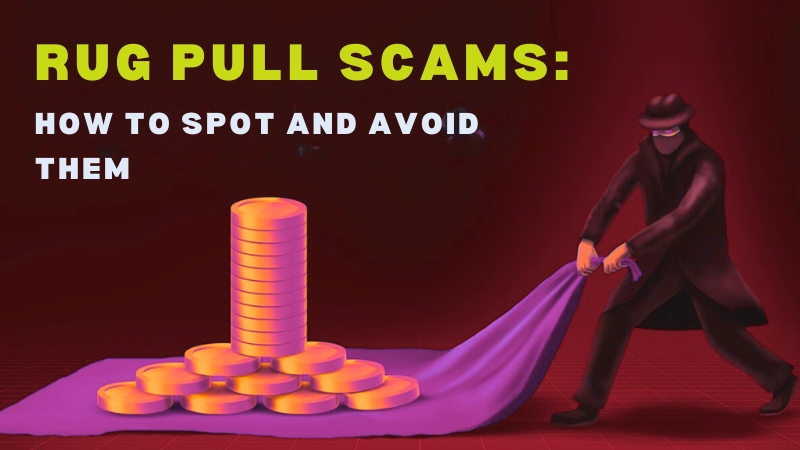Cryptocurrency and decentralized finance (DeFi) have revolutionized the financial world, offering investors new opportunities to grow their wealth. However, with innovation comes risk, and one of the most prevalent threats in the crypto space today is rug pull scams. These fraudulent schemes have resulted in billions of dollars in losses, leaving unsuspecting investors with worthless tokens.
In this guide, we will explain what rug pull scams are, how they work, how to identify red flags, and most importantly, how to protect yourself from falling victim to these scams. Whether you are a seasoned crypto trader or a newcomer, understanding rug pull scams is crucial to safeguarding your investments.
What is a Rug Pull Scam?
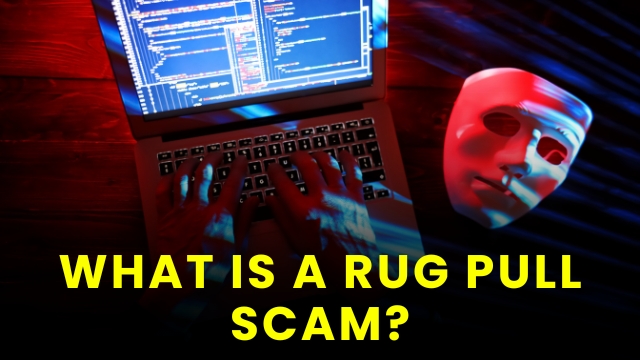
A rug pull scam is a type of cryptocurrency fraud where project developers abandon their project after attracting investors, taking all the invested funds with them. The term ‘rug pull’ comes from the phrase ‘pulling the rug out from under someone,’ which perfectly describes how these scams operate—leaving investors stranded with worthless assets.
Rug pull scams are most common in decentralized exchanges (DEXs), NFT projects, and DeFi protocols, where fraudsters create seemingly promising projects, gain investor trust, and disappear once they’ve accumulated enough funds.
Types of Rug Pull Scams
Rug pull scams generally fall into three main categories:
1. Liquidity Theft
Liquidity pools are essential for trading on decentralized exchanges. In this type of scam, the developers create a project, encourage investors to contribute liquidity, and then withdraw all the funds, leaving investors unable to trade their tokens.
2. Sell Order Restrictions (Honeypot Scams)
Some scammers create tokens that can only be bought but not sold. Investors unknowingly pump money into these projects, only to realize they are locked out from selling their assets.
3. Token Dumping (Soft Rug Pulls)
In this case, developers hold a large portion of tokens and promote the project aggressively. Once the price skyrockets, they sell off their holdings, crashing the price and leaving investors with worthless tokens.
How NFT Rug Pulls Work
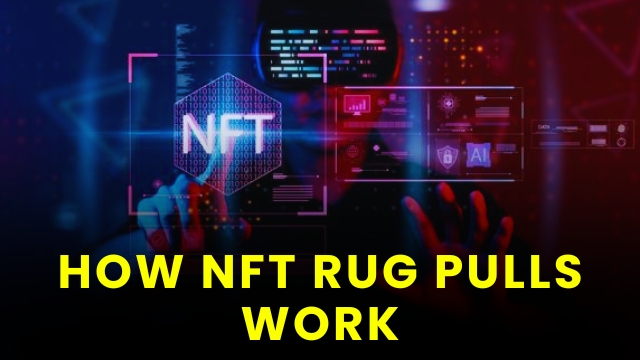
NFT rug pulls work similarly to traditional crypto scams but focus on non-fungible tokens (NFTs). Here’s how they typically operate:
- Fake NFT Projects – Scammers create an NFT collection, heavily market it on social media, and promise exclusive benefits.
- Hyped Pre-Sales – Investors buy into the project during a minting event, hoping for high resale value.
- Sudden Disappearance – The developers vanish after collecting funds, deleting their website and community channels.
Some notorious NFT rug pulls include:
- Frosties (2022) – Sold out in hours, collecting over $1 million before disappearing.
- Big Daddy Ape Club (2022) – A $1.3 million scam on Solana where no NFTs were ever delivered.
- Baller Ape Club (2022) – Developers laundered $2.6 million and fled.
Hard Rug Pulls vs. Soft Rug Pulls
- Hard Rug Pulls: Developers intentionally create a project with built-in malicious code, allowing them to drain funds.
- Soft Rug Pulls: Developers slowly abandon a project after making money, without an outright theft event.
How to Spot a Rug Pull Scam
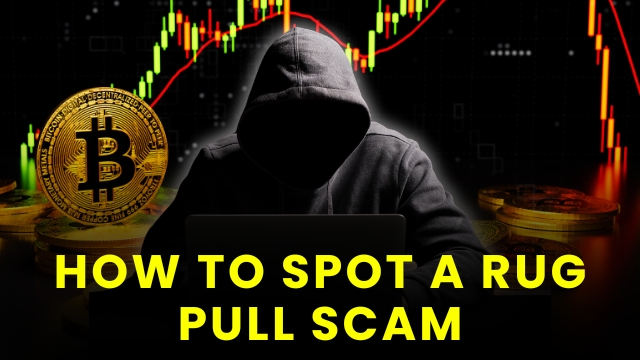
Identifying rug pull scams can be challenging, but there are several red flags to watch out for before investing in any cryptocurrency project:
1. Anonymous Developers
A project without a transparent team is a major red flag. Scammers often use fake identities or remain anonymous to avoid accountability.
2. No Smart Contract Audit
Reputable crypto projects undergo third-party smart contract audits to ensure security. If a project lacks an audit or has a shady report, avoid investing.
3. Too-Good-To-Be-True Returns
If a project promises unrealistic returns (e.g., “1000x gains in a month”), it’s likely a scam. Sustainable projects do not offer guaranteed profits.
4. Lack of a Whitepaper or Roadmap
A legitimate crypto project provides a clear roadmap, whitepaper, and long-term vision. If this information is missing or vague, it’s a potential scam.
5. Suspicious Tokenomics
Check for:
- High developer allocation (if devs hold most tokens, they can dump them anytime).
- No liquidity lock (if liquidity is not locked, developers can withdraw funds).
- No clear use case (tokens should have utility beyond speculation).
6. Poor Community Engagement
A project with fake social media followers, inactive communities, or deleted negative comments is suspicious. Genuine projects have engaged communities.
How to Avoid Rug Pull Scams
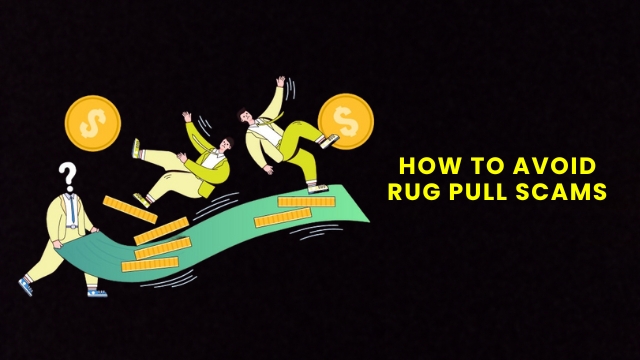
Follow these best practices to protect yourself from rug pulls:
1. Research the Project Thoroughly
- Read the whitepaper.
- Verify team members.
- Check community engagement.
2. Use Trusted Crypto Platforms
Stick to well-known exchanges like Binance, Coinbase, or Kraken, which conduct thorough due diligence before listing tokens.
3. Check Liquidity Lock and Token Distribution
- Use tools like Etherscan or BscScan to check liquidity locks.
- Avoid projects where developers hold a large portion of tokens.
4. Look for Smart Contract Audits
- Search for security audits from firms like CertiK or Hacken.
- Avoid projects with unaudited or forked contracts.
5. Avoid FOMO (Fear of Missing Out)
Scammers exploit urgency to push investors into rushed decisions. Always take your time before investing.
6. Stay Informed & Use Crypto Scanners
- Follow crypto news from sources like CoinDesk, CoinTelegraph, or Decrypt.
- Use rug pull detectors like Token Sniffer or DappRadar.
AI’s Role in Fighting Rug Pull Scams
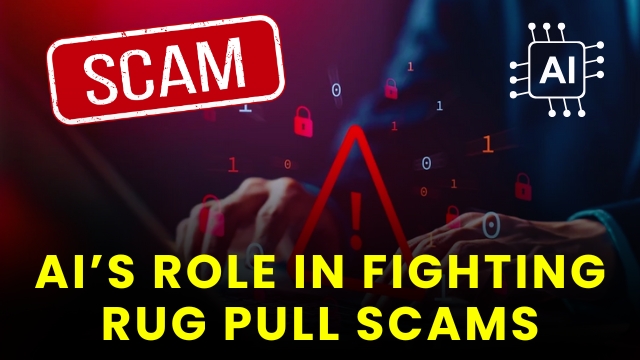
AI is playing an increasing role in detecting and preventing crypto fraud. Advanced machine learning models can:
- Analyze social media sentiment to detect negative patterns.
- Monitor blockchain transactions for suspicious activity.
- Identify fake projects by tracking contract deployments.
Using AI-driven fraud detection tools can help investors spot scams before they occur.
Conclusion
Rug pull scams are a serious threat in the crypto world, but by staying informed and vigilant, you can protect your investments. Always do thorough research, verify project details, and avoid FOMO-driven decisions.
By following these guidelines, you’ll be well-equipped to spot and avoid rug pull scams before they happen.
Have you ever encountered a rug pull scam? Share your experience in the comments below!
Frequently Asked Questions About Rug Pull Scams
Q1.What is a rug pull scam in crypto?
Answer: A rug pull scam in crypto is a fraudulent scheme where developers create a seemingly legitimate cryptocurrency project, attract investors, and then suddenly abandon it while taking all the funds. The term “rug pull” comes from the idea of pulling the rug out from under investors, leaving them with worthless tokens. These scams are most common in the DeFi (Decentralized Finance) space, including decentralized exchanges (DEXs) and NFT projects, where scammers exploit the lack of regulation and investor FOMO (fear of missing out).
Q2. How do rug pull scams work?
Answer: Understanding how rug pull scams work is crucial for investors. Typically, developers launch a new token or NFT project, market it aggressively through social media and influencers, and promise high returns or exclusive benefits. Investors pour their money into the project, driving up the price. Once the project gains enough traction and liquidity, the developers either drain the liquidity pool, restrict selling (in honeypot scams), or dump their pre-mined tokens on the market, crashing the price. In some cases, smart contracts contain hidden backdoors that allow the developers to withdraw all funds without notice.
Q3. How to identify and avoid a rug pull scam?
Answer: To identify and avoid rug pull scams, investors must conduct thorough research before investing. Some red flags include anonymous developers, unrealistic profit guarantees, no liquidity lock, and a lack of a detailed roadmap or whitepaper. Checking whether a project has undergone a security audit, verifying team credentials, and assessing community engagement on social media platforms can help detect potential scams. Additionally, using blockchain analysis tools like Etherscan or DappRadar can provide insights into token distribution and transaction history.
Q4. What are some examples of the biggest rug pull scams?
Answer: Some of the biggest rug pull scams include OneCoin, a Ponzi scheme that defrauded investors of $4 billion, and the Squid Game Token, which capitalized on the Netflix show’s popularity before its developers disappeared with $3.3 million. Thodex, a Turkish crypto exchange, vanished with over $2 billion in user funds, while NFT scams like Frosties and Big Daddy Ape Club misled buyers into purchasing fake collectibles before the developers disappeared. These cases highlight the importance of vigilance in the crypto space.
Q5. Are rug pull scams illegal, and can victims recover their money?

